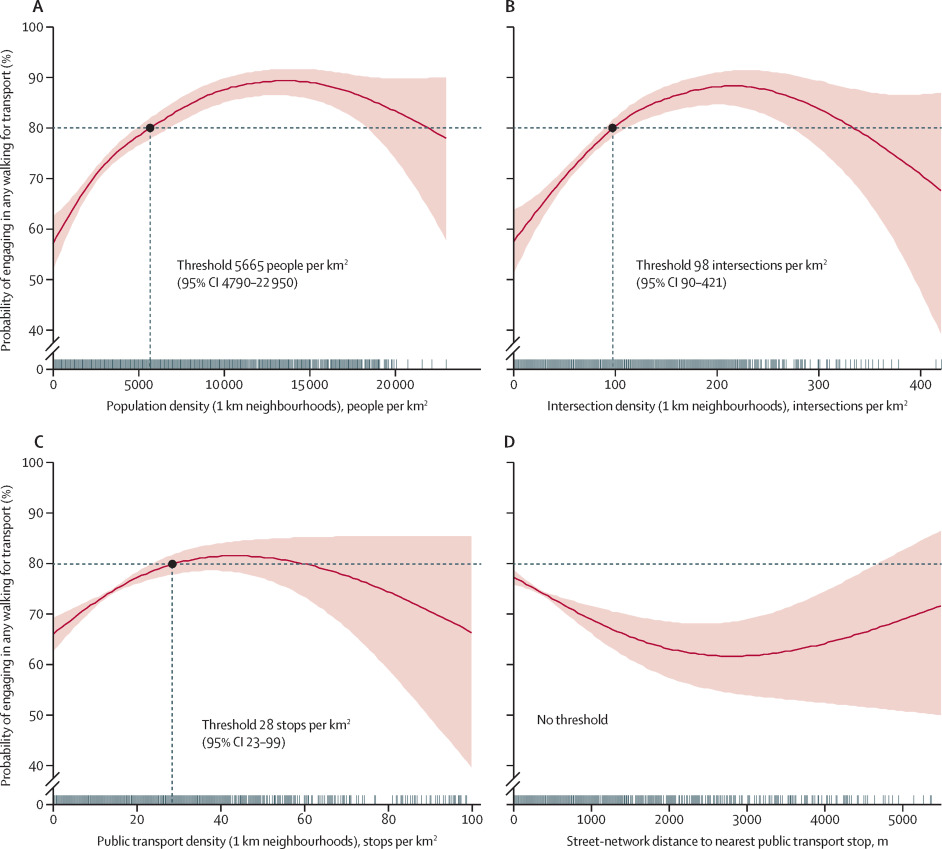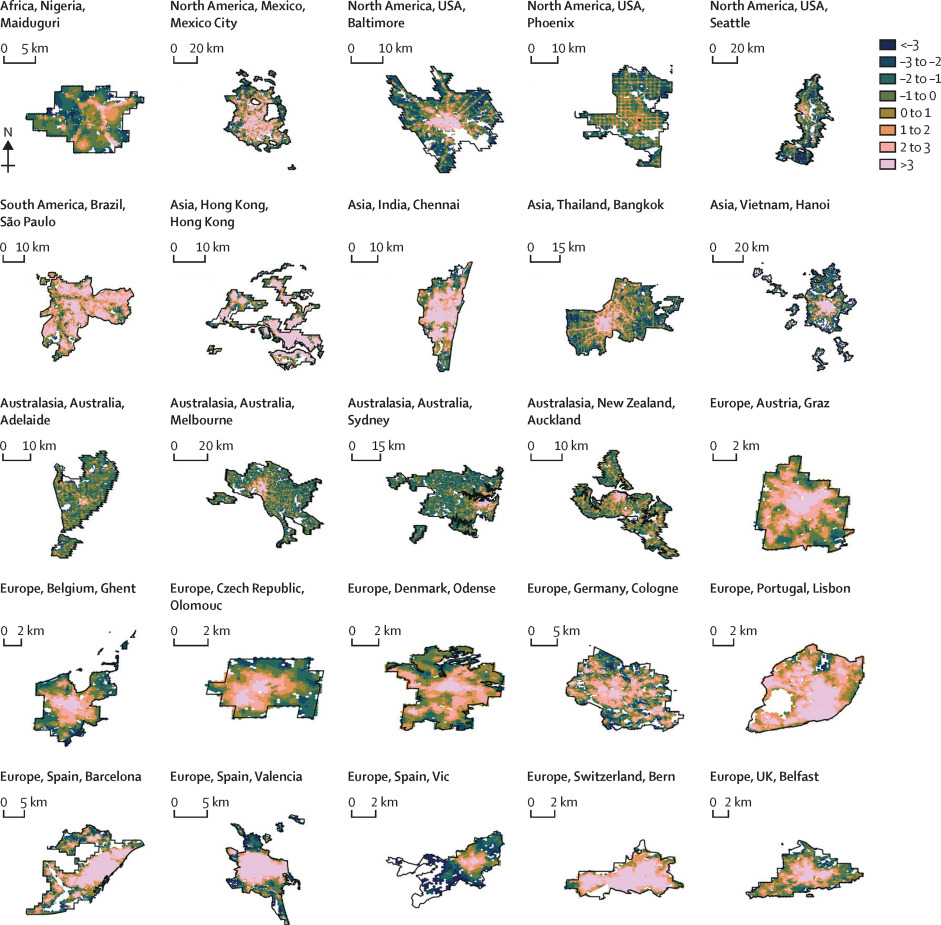After many years of hard work, our series of articles on urban design, transport, and health has been published by The Lancet Global Health.
 In our first paper, we analyzed urban policies and calculated built environment indicators for 25 cities across 6 continents to assess walkability and accessibility. Our policy analysis found policies inconsistent with public health evidence, rhetoric endorsing health and sustainability but few measurable policy targets, and substantial implementation gaps.
In our first paper, we analyzed urban policies and calculated built environment indicators for 25 cities across 6 continents to assess walkability and accessibility. Our policy analysis found policies inconsistent with public health evidence, rhetoric endorsing health and sustainability but few measurable policy targets, and substantial implementation gaps.
 In our second paper, our team calculated thresholds of built environment characteristics that support two physical activity goals: 1) an 80% probability of walking for transport, and 2) a 15% reduction in insufficient physical activity through walking.
In our second paper, our team calculated thresholds of built environment characteristics that support two physical activity goals: 1) an 80% probability of walking for transport, and 2) a 15% reduction in insufficient physical activity through walking.
 I led our third paper, in which our geospatial team developed open-source software to calculate indicators of walkability and accessibility around the world, and then linked these back to cities’ policy contexts and identified populations living above and below the thresholds for physical activity. Also check out our appendix which contains 380 maps and visualizations for the 25 cities.
I led our third paper, in which our geospatial team developed open-source software to calculate indicators of walkability and accessibility around the world, and then linked these back to cities’ policy contexts and identified populations living above and below the thresholds for physical activity. Also check out our appendix which contains 380 maps and visualizations for the 25 cities.
 Our fourth paper sums up our findings and considers where we go from here. Few cities in our study had measurable policy standards and targets to actually build healthier and more sustainable cities, and their health-supportive built environment features were often inadequate or inequitably distributed. The series is also accompanied by a set of commentaries, from authors from organizations like the WHO and C40, reflecting on this research and its implications for practice around the world.
Our fourth paper sums up our findings and considers where we go from here. Few cities in our study had measurable policy standards and targets to actually build healthier and more sustainable cities, and their health-supportive built environment features were often inadequate or inequitably distributed. The series is also accompanied by a set of commentaries, from authors from organizations like the WHO and C40, reflecting on this research and its implications for practice around the world.
We have simultaneously launched the Global Observatory of Healthy and Sustainable Cities to advance healthy and sustainable urban planning, benchmark and monitor cities’ progress, and share more consistent, comparable urban data. The whole series of articles is free and open access, as is our software. Scorecards for our cities are here alongside the 1,000 Cities Challenge to which anyone can contribute. Here’s an example scorecard for São Paulo:
 Check out The Lancet Global Health series for more.
Check out The Lancet Global Health series for more.
3 replies on “The Lancet Global Health Series on Urban Design, Transport, and Health”
[…] of Urban Policy and Research coauthored with a team comprising many of the folks from our recent series in The Lancet Global Health. The article is titled “Policy-Relevant Spatial Indicators of […]
[…] in Abu Dhabi this week. Our symposium at the congress will share the methods and findings from our The Lancet Global Health series published this summer, as well as our ongoing work on the Thousand Cities […]
[…] Policy and Economy, coauthored with a team that includes several of the folks from our recent series in The Lancet Global Health. The JCCPE article, “A Pathway to Prioritizing and Delivering […]